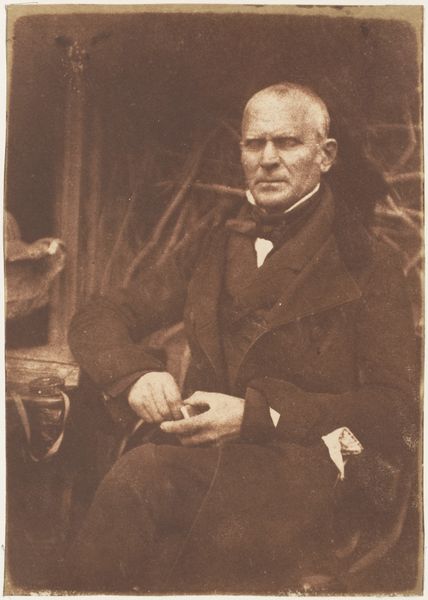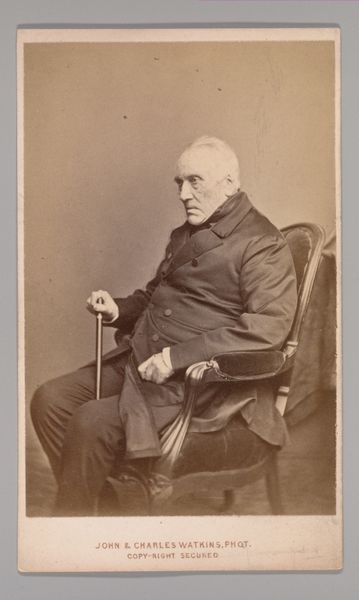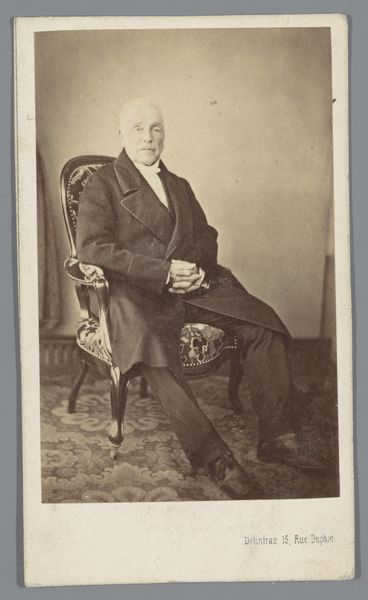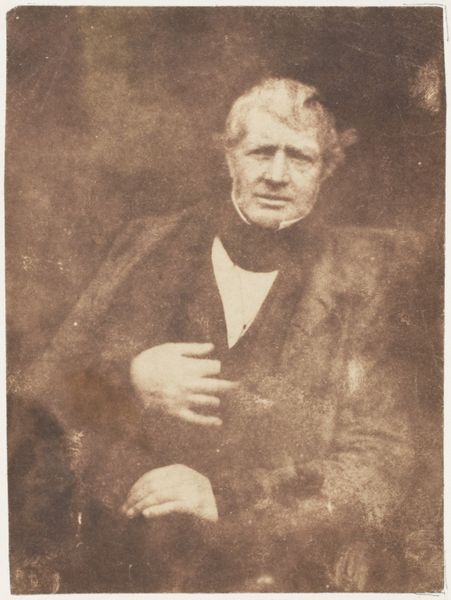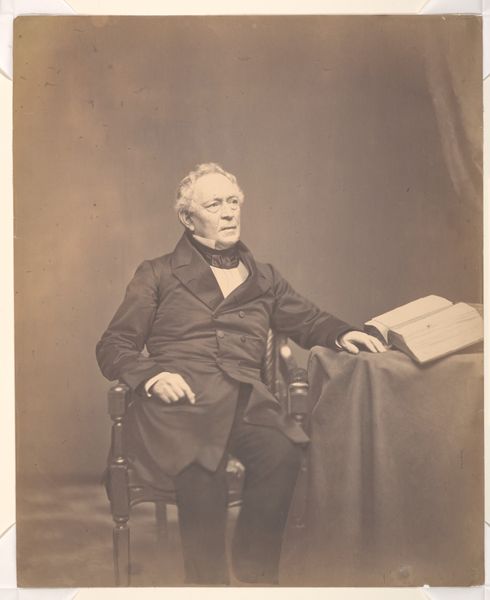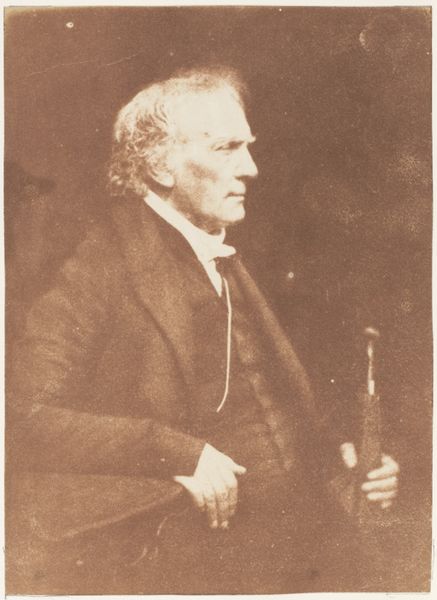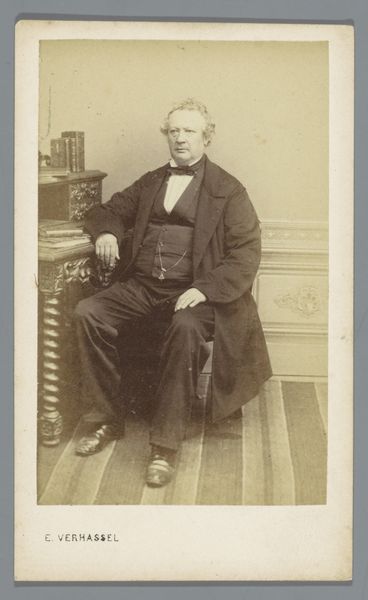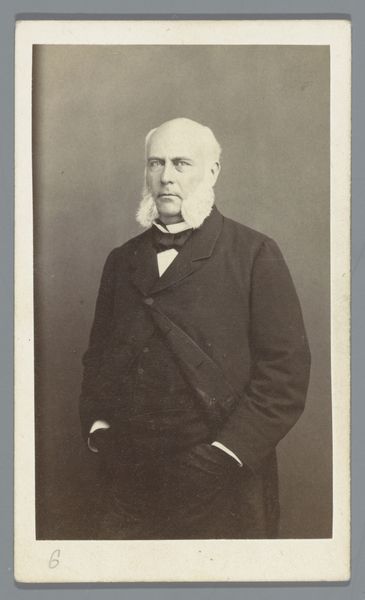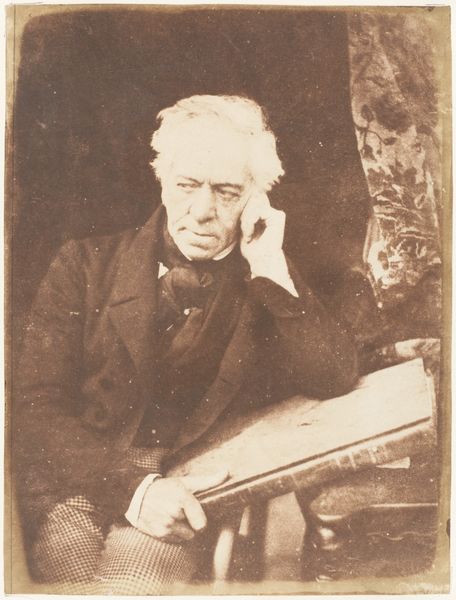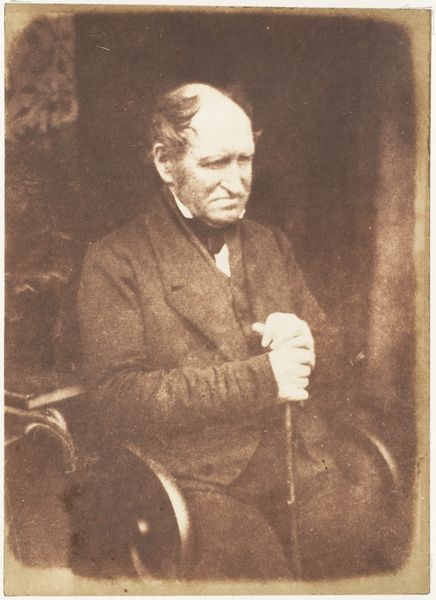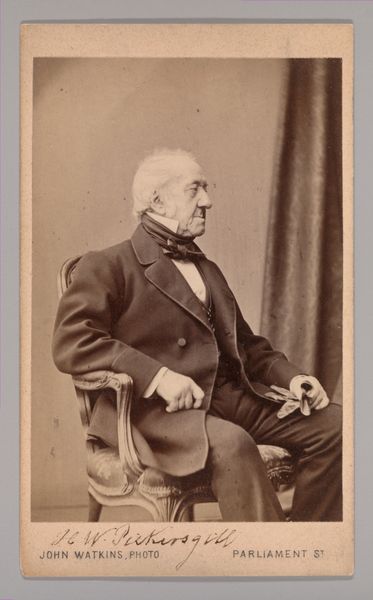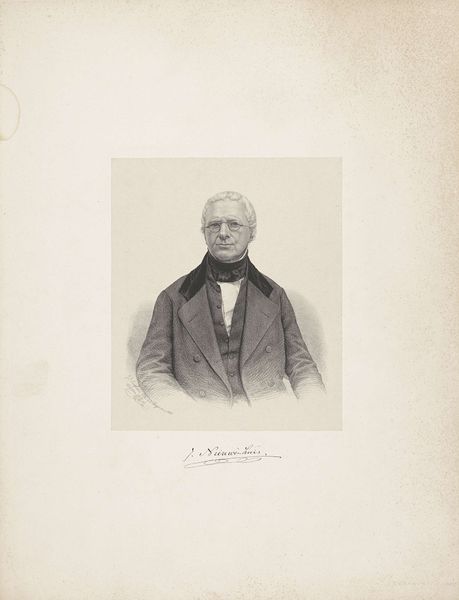
daguerreotype, photography
#
portrait
#
daguerreotype
#
photography
#
realism
Copyright: Public Domain
Alexander Thompson was captured between 1843 and 1848, by Hill and Adamson using a calotype, an early photographic process. This image wasn't just snapped; it was carefully crafted. The calotype process involved coating paper with silver iodide, exposing it in a camera, and then developing it. This wasn't point-and-shoot. It was an alchemical process that required skill, patience, and an understanding of chemistry and light. Consider the pose. The subject, Alexander Thompson, is shown in a moment of contemplation, his hand thoughtfully placed on his chin. The soft focus, a characteristic of the calotype process, adds to the image's dreamy quality, as if we're seeing Thompson through a veil of time. The calotype, with its hands-on, labor-intensive method, stands in stark contrast to today's instant photography. It reminds us that every image is the result of deliberate choices, skilled craftsmanship, and a unique set of material conditions. In short, photography is not just about seeing, but about making.
Comments
No comments
Be the first to comment and join the conversation on the ultimate creative platform.
